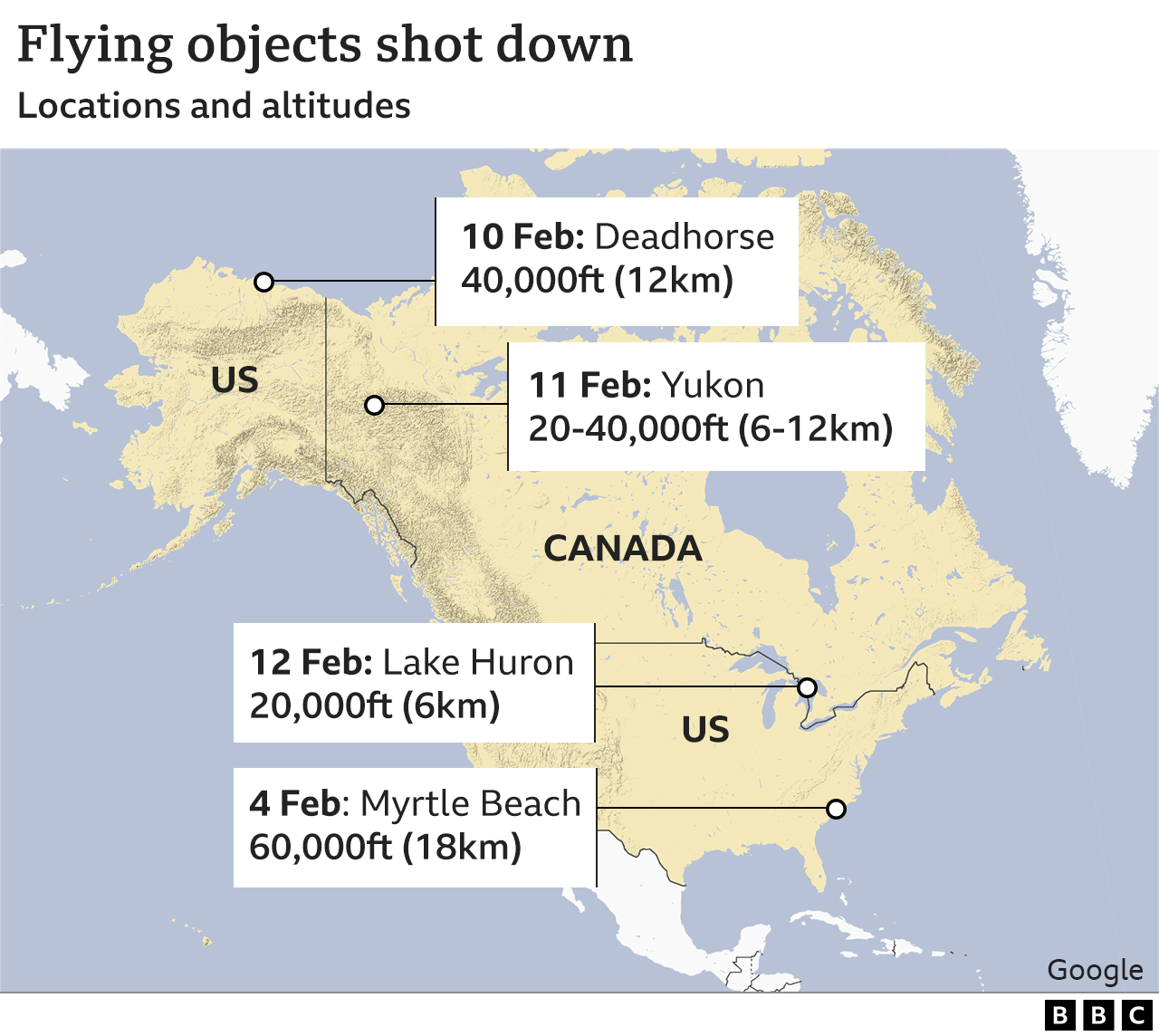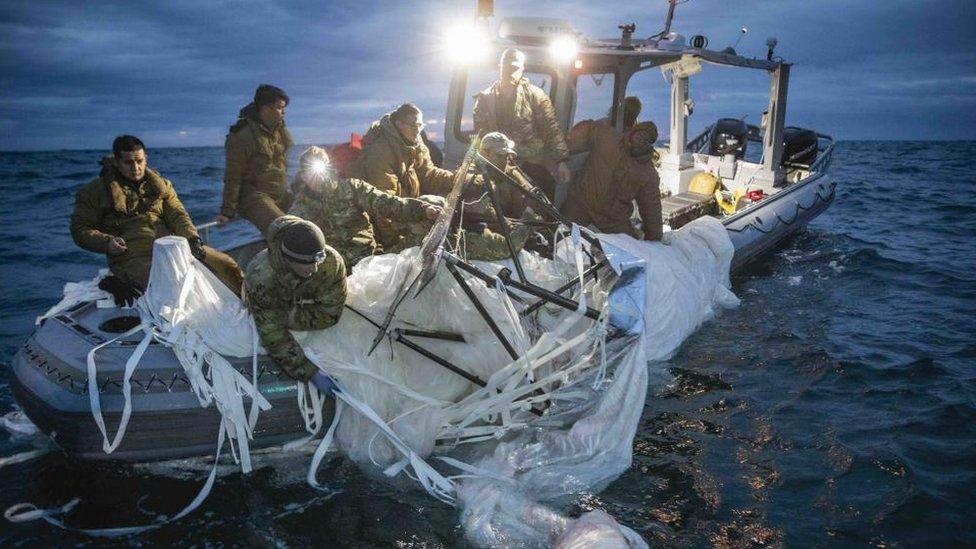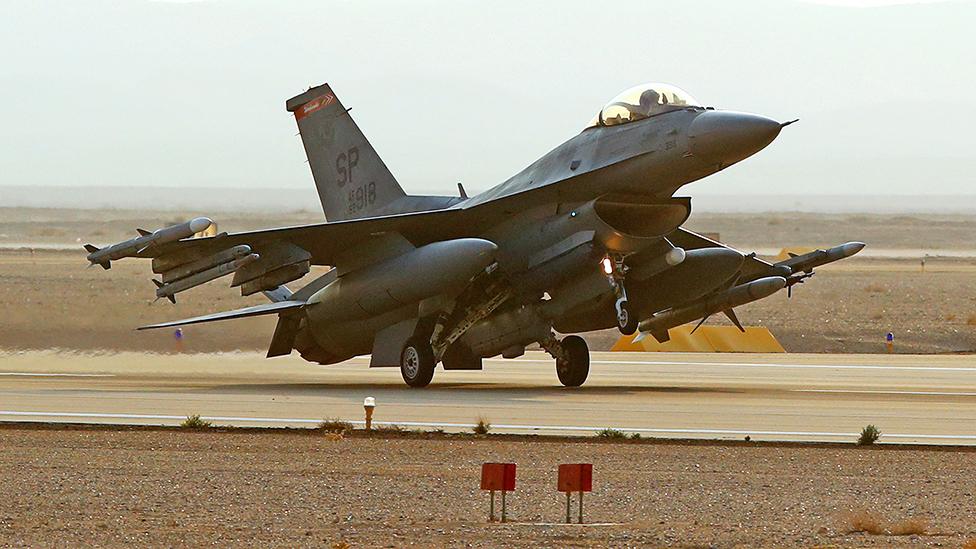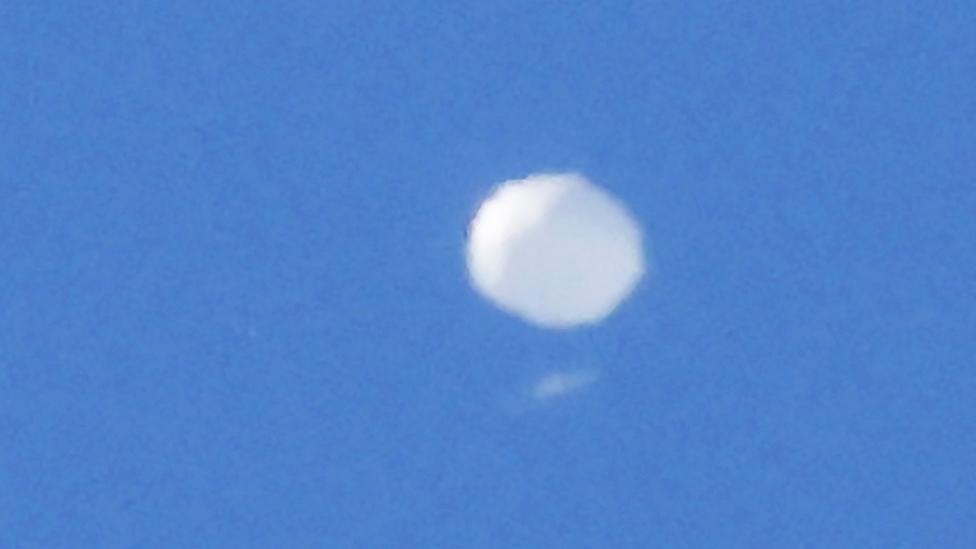Chinese balloon sensors recovered from ocean, says US
- Published
No indication of aliens... I loved ET but I'll leave it there - WH spokeswoman
The sensors from a suspected Chinese spy balloon shot down over the US earlier this month have been recovered from the Atlantic Ocean, the US says.
Search crews found "significant debris from the site, including all of the priority sensor and electronics pieces identified", said US Northern Command.
The FBI is examining the items, which the US said were used to spy on sensitive military sites.
The US has shot down three more objects since the first on 4 February.
"Large sections of the structure" were also recovered on Monday off the coast of South Carolina, military officials said.
About 30-40ft (9-12m) of the balloon's antennas were among the items found, according to CBS, the BBC's US partner.
US officials said the high-altitude balloon originated in China and was used for surveillance, but China said it was a weather-monitoring airship that had blown astray.

Since that first incident, American fighter jets have shot down three more high-altitude objects - over Alaska, Canada's Yukon territory, and Lake Huron on the US-Canada border.
But officials have not said these objects were suspected spy balloons.
In the Lake Huron strike, the first Sidewinder missile fired by the US F-16 warplane missed its target and exploded in an unknown location, US media reported, citing military sources.
The second missile hit the target. Each Sidewinder missile costs more than $400,000 (£330,000).
Officials have said the slow-moving unidentified objects, all of which have been smaller than the first balloon, may be difficult for military pilots to target.
White House spokesman John Kirby said on Monday the three other objects were shot down "out of an abundance of caution".
They did not pose "any direct threat to people on the ground", but were destroyed "to protect our security, our interests and flight safety", he said.
The balloon shot down over South Carolina was described by officials as the size of three buses.
The second object, over Alaska, was described as the size of a "small car". The third object, over the Yukon, was "cylindrical". And the fourth, over Michigan, was said to be "octagonal" with strings attached.
A Pentagon memo later reported in US media said the flying object shot down over Yukon appeared to be a "small, metallic balloon with a tethered payload below it".
On Tuesday, Mr Kirby said that the objects did not appear to be involved in intelligence collection and "could be balloons that were simply tied to commercial or research entities, and therefore benign".
But he noted no company, organisation or government have said they were the owners of the objects.
Watch: 'What’s going on?' The mind-boggling balloon mystery in 61 seconds
The recovery of the balloon shot down on 4 February was delayed due to bad weather.
Efforts are under way to collect debris from where the other objects were blown out of the sky.
Canadian Armed Forces Major-General Paul Prévost said all three of the most recent objects to be shot down appeared to be "lighter than air" machines, and described the Lake Huron object as "a suspected balloon".
Secretary of State Antony Blinken is considering meeting China's most senior diplomat, Wang Yi, later this week at a security conference in Munich, Germany, sources familiar with the negotiations told US media on Monday.
Amid the row over high-altitude aircraft, America's top diplomat cancelled a visit to Beijing that was initially planned for last week.
Meanwhile, in a sign of heightened tensions over the incidents in the US, Romania scrambled fighter jets on Tuesday to investigate an aerial object entering European airspace.
But the country's defence ministry said the pilots were unable to locate it and abandoned the mission after half an hour.

Navy divers helped recover the balloon from the Atlantic Ocean


What are your questions for our experts on the US balloons story?
In some cases your question will be published, displaying your name, age and location as you provide it, unless you state otherwise. Your contact details will never be published. Please ensure you have read our terms & conditions and privacy policy.
Use this form to ask your question:
If you are reading this page and can't see the form you will need to visit the mobile version of the BBC website to submit your question or send them via email to YourQuestions@bbc.co.uk, external. Please include your name, age and location with any question you send in.
Related topics
- Published13 February 2023

- Published13 February 2023

- Published13 February 2023
